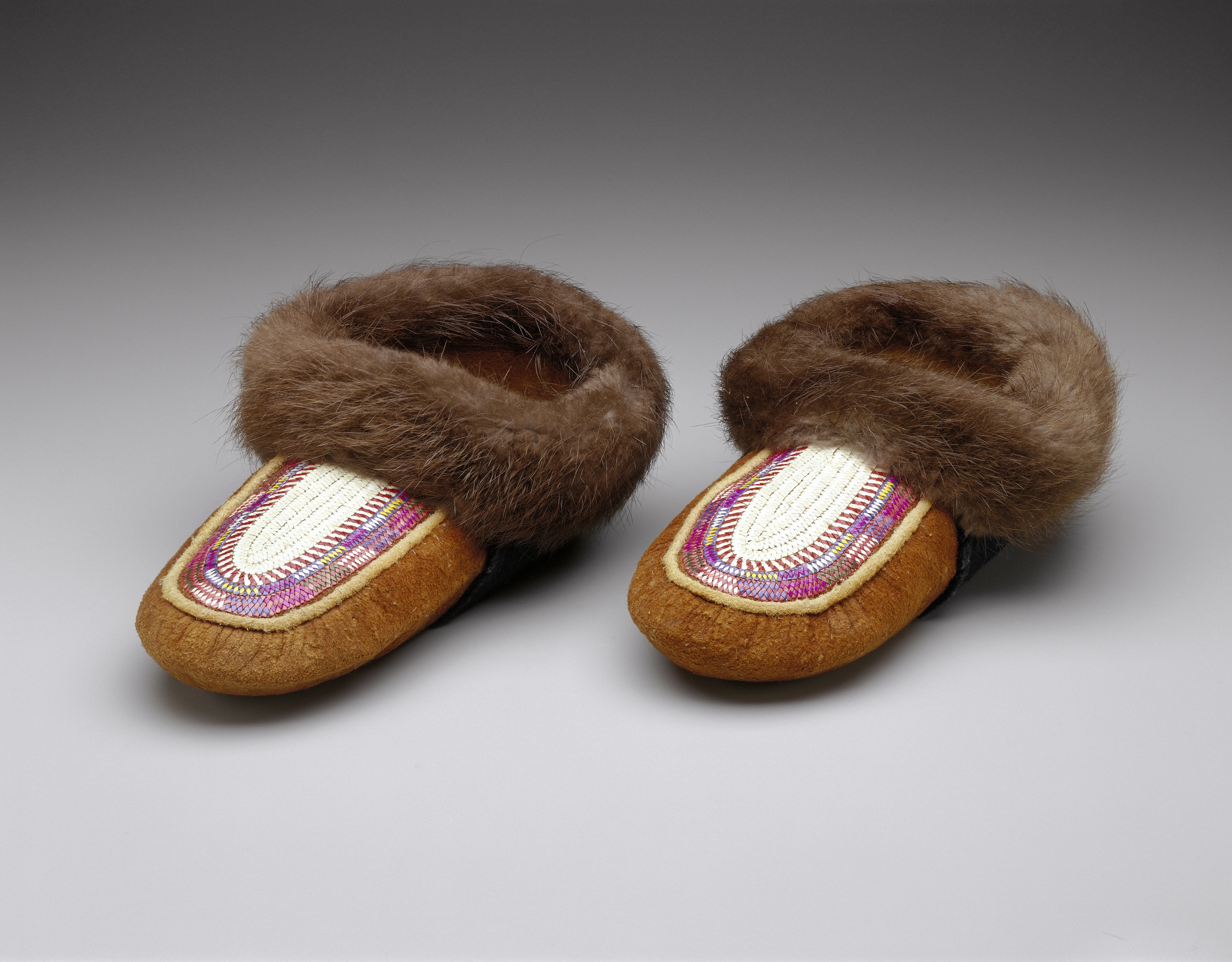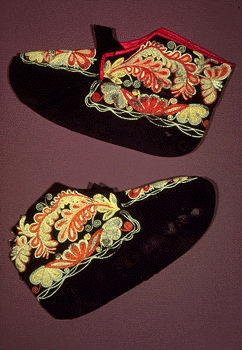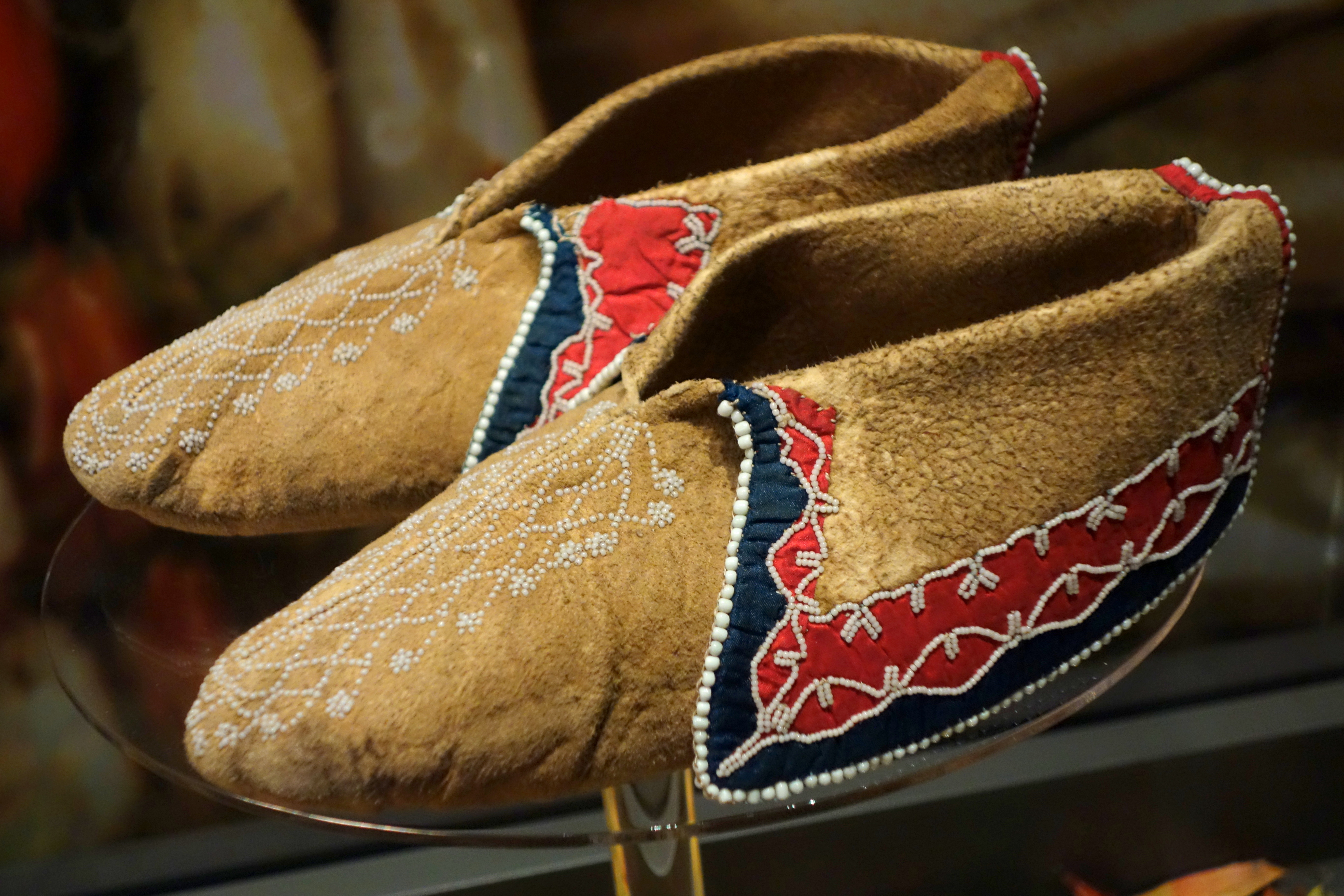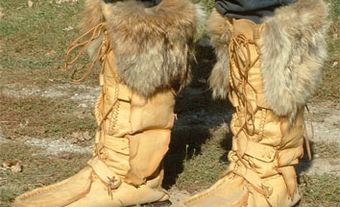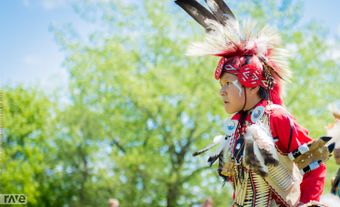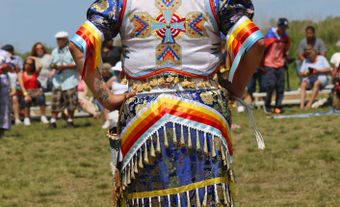Moccasins are a type of footwear often made of animal hide and traditionally made and worn by various Indigenous peoples in Canada. During the fur trade, Europeans adopted these heelless, comfortable walking shoes to keep their feet warm and dry. Moccasins continue to serve as practical outerwear, as well as pieces of fine Indigenous handiwork and artistry.
What is a Moccasin?
The word moccasin loosely translates to “footwear” in various Algonquian languages, such as Plains Ojibwe (makisin or makizinan), Siksika (niitsitsikin) and Plains Cree (maskisin). A type of shoe, boot or slipper, Indigenous peoples historically made moccasins out of animal skins of, for example, caribou, deer, moose, elk and bison.
In areas with harsh winters, such as the Subarctic, Indigenous peoples designed moccasins with soft soles, so as to fit easily into snowshoes. In the Plains, however, Indigenous peoples added hard soles to their moccasins, which helped with walking over rocky land.
During the fur trade, voyageurs and fur traders adopted moccasins (as well as other Indigenous apparel, such as buckskin pants and hats) because of their durability and functionality. Today, moccasins are still used as either outdoor shoes or indoor slippers by both Indigenous and non-Indigenous peoples.
How are Moccasins Made?
While Indigenous peoples had their own ways of making moccasins, there are some general similarities. Traditionally, women made moccasins by cleaning, stretching and drying out animal skins in the sun. The hides were also scraped down with a bone knife or similar tool in order to achieve a uniform look and consistency. The skins were typically smoked before the women crafted the moccasins, stitching them together with sinew.
Most often, moccasins were fashioned from one piece of leather, with a seam running from the back of the shoe down the centre. However, moccasins came in different styles and varieties. Some had cloth gathered and sewn at the toe, while others had a flatter design. The use of side flaps, fur linings, high-cut designs (above the ankle) and low-cut varieties (ankle length) all depended on the maker of the shoe and on the moccasin’s purpose. For example, fur lining provided warmth in cold climates, but this was unnecessary for people in warm environments.
Decorating Moccasins
Historically, Indigenous women decorated moccasins in various ways, including with red ochre paint, fringe, ribbon, quillwork and copper bells. The design of the moccasin often reflected the maker or wearer’s heritage, community or personal history.
By the 1850s, moccasin designs changed to reflect the availability of European materials such as glass beads and silk thread. Floral patterns were especially popular among European consumers, and it was common for Indigenous girls to learn these sewing and decorating patterns in European-led mission schools.
Preserving Indigenous Culture
In addition to their practicality, traditional moccasins are pieces of artisan craftwork. As a result, many have been preserved in museums and cultural centres across North America. Additionally, elders and artists in many Indigenous communities in Canada continue to preserve this traditional footwear by teaching new generations about moccasin-making and decorating techniques.

 Share on Facebook
Share on Facebook Share on X
Share on X Share by Email
Share by Email Share on Google Classroom
Share on Google Classroom
